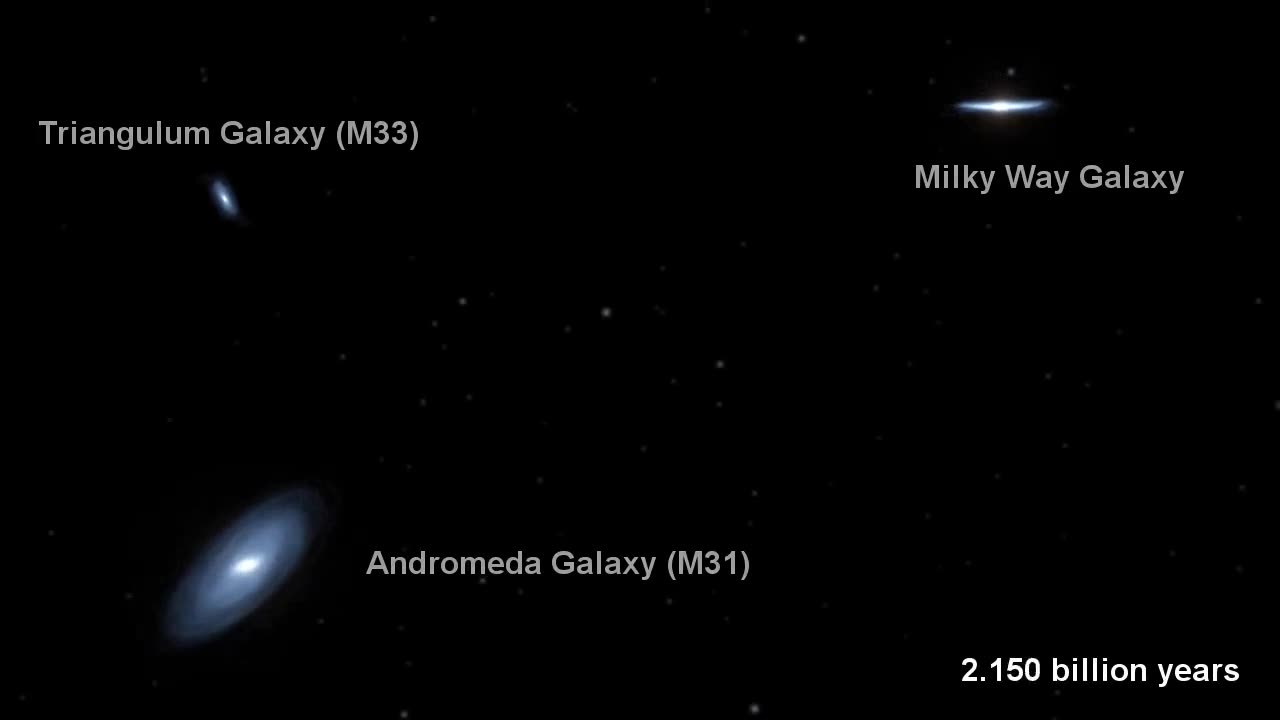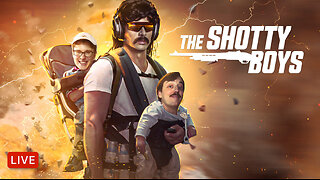Premium Only Content

Milky Way's Head On Collision
This animation depicts the collision between our Milky Way galaxy and the Andromeda galaxy. Hubble Space Telescope observations indicate that the two galaxies, pulled together by their mutual gravity, will crash together about 4 billion years from now. Around 6 billion years from now, the two galaxies will merge to form a single galaxy. The video also shows the Triangulum galaxy, which will join in the collision and perhaps later merge with the Andromeda/Milky Way pair.
Visualization Credit: NASA, ESA, and F. Summers (STScI)
Simulation Credit: NASA, ESA, G. Besla (Columbia University), and
R. van der Marel (STScI) This animation depicts the collision between our Milky Way galaxy and the Andromeda galaxy. Hubble Space Telescope observations indicate that the two galaxies, pulled together by their mutual gravity, will crash together about 4 billion years from now. Around 6 billion years from now, the two galaxies will merge to form a single galaxy. The video also shows the Triangulum galaxy, which will join in the collision and perhaps later merge with the Andromeda/Milky Way pair.
Visualization Credit: NASA, ESA, and F. Summers (STScI)
Simulation Credit: NASA, ESA, G. Besla (Columbia University), and
R. van der Marel (STScI) This animation depicts the collision between our Milky Way galaxy and the Andromeda galaxy. Hubble Space Telescope observations indicate that the two galaxies, pulled together by their mutual gravity, will crash together about 4 billion years from now. Around 6 billion years from now, the two galaxies will merge to form a single galaxy. The video also shows the Triangulum galaxy, which will join in the collision and perhaps later merge with the Andromeda/Milky Way pair.
Visualization Credit: NASA, ESA, and F. Summers (STScI)
Simulation Credit: NASA, ESA, G. Besla (Columbia University), and
R. van der Marel (STScI)
-
 4:11:49
4:11:49
Nerdrotic
15 hours ago $37.75 earnedThe Best and Worst of 2024! Sony Blames Fans | Batman DELAYED | Nosferatu! |Friday Night Tights 334
186K32 -
 7:55:51
7:55:51
Dr Disrespect
19 hours ago🔴LIVE - DR DISRESPECT - WARZONE - SHOTTY BOYS ATTACK
233K33 -
 1:30:23
1:30:23
Twins Pod
19 hours agoHe Went From MARCHING With BLM To Shaking Hands With TRUMP! | Twins Pod - Episode 45 - Amir Odom
145K31 -
 1:02:30
1:02:30
Exploring With Nug
20 hours ago $4.33 earned2 Duck Hunters Missing After Kayak Capsizes!
68.9K4 -
 46:48
46:48
Mally_Mouse
13 hours agoLet's Hang!! -- Opening Christmas gifts from YOU!
76.4K1 -
 44:55
44:55
Athlete & Artist Show
20 days ago $2.06 earnedNHL 4 Nations Snubs, Was Hawk Tuah Coin A Scam?
72.7K -
 33:47
33:47
Stephen Gardner
19 hours ago🔥Pentagon Whistleblower UNLEASHES on Biden and Obama!
128K288 -
 2:20:30
2:20:30
The Dilley Show
20 hours ago $28.86 earnedRoger Stone in Studio plus Q&A Friday! w/Author Brenden Dilley 12/27/2024
104K22 -
 1:57:02
1:57:02
The Charlie Kirk Show
19 hours agoThe Great H-1B Battle + AMA | Lomez | 12.27.24
191K297 -
 11:39
11:39
Russell Brand
1 day agoWhat You're Not Being Told About The Syrian War
186K300